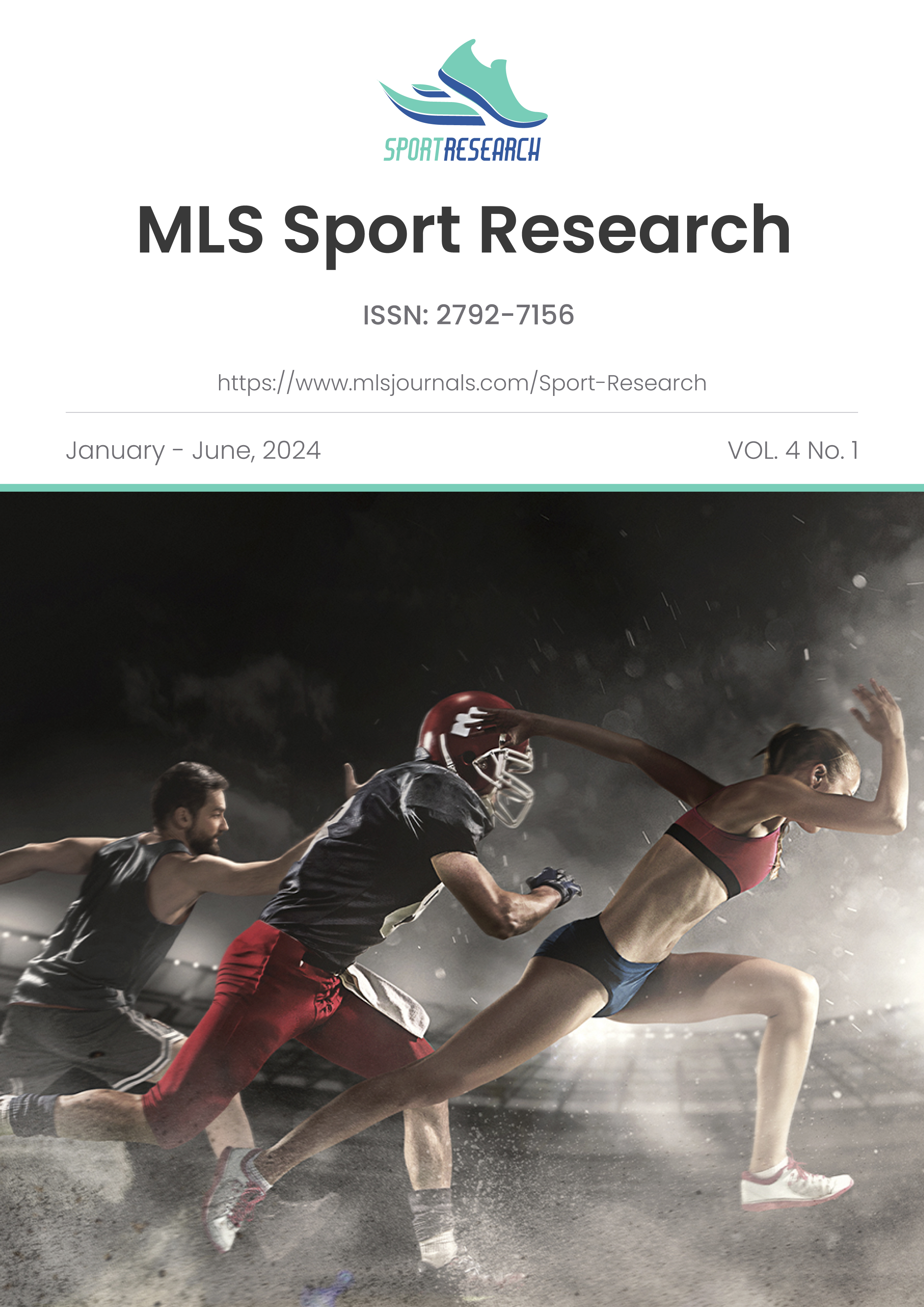Volume 4 Issue 1 (2024)
Published 2024-07-10
Full Issue
Football is a sport of cooperation-opposition, with high uncertainty and in which there are constantly high intensity actions such as jumps, changes of direction or contact with the opponent that demand a high level of physical performance from the player. In recent years, gym training has become an essential tool and it has been demonstrated that strength training before the start of a match offers improvements in the physical performance of the players thanks to the effect of post-activation potentiation (PAP). The aim of the present review was to test which strength training protocols maximize the effect of PAP. A search for articles was carried out in the PubMed database, finding 144 articles which, once filtered according to the inclusion criteria, were reduced to 13. The guidelines for the design of reviews established by PRISMA were maintained. The results show that for most authors strength training, with protocols with concentric, eccentric or plyometric exercises, in all planes of movement, with low volume and at high intensities (±85%1RM) in conventional training or maximum in the case of plyometric exercises, with a test rest of between 5 to 10 minutes, could be beneficial for subsequent performance in a soccer match. It was concluded that there are differential aspects such as that not all people will respond in the same way to the same PAP protocol, being determinant the age or previous experience in strength training.
El objetivo de esta revisión sistemática ha sido comparar los diferentes métodos de entrenamiento de fuerza para mejorar el rendimiento en pruebas de entre 800 y 5000 m en atletismo, eventos caracterizados por altos requerimientos de capacidad aeróbica, de fuerza máxima y de potencia. La base de datos Pubmed fue empleada para buscar artículos originales acerca del entrenamiento de fuerza en medio fondistas. Para ello se introdujeron diferentes combinaciones de algunos términos como: “middle distance”, “running performance”, “VO2max”, “running economy”, “resistance training”, “strength training”, “concurrent training” y “plyometric training”. Los artículos cuyas intervenciones fueron evaluadas con test de contrarreloj superiores a 5 km fueron excluidos. Inicialmente se recolectaron 298 artículos, de los cuales 9 fueron seleccionados atendiendo a los criterios de inclusión y exclusión. Tras un periodo de intervención con una duración de 6 a 12 semanas, en todos los artículos se observaron mejoras en parámetros fisiológicos y neuromusculares, a excepción de uno. En este estudio se apreció una tendencia a la mejora, aunque los cambios no fueron significativos. Los estudios que mayores mejoras obtuvieron, realizaron entrenamiento de fuerza con cargas del 70 % RM o superior. Además, este entrenamiento de fuerza fue combinado con ejercicios pliométricos realizados sin peso adicional o añadiendo un 30% del peso corporal. En conclusión, combinar el entrenamiento de fuerza a una intensidad del 70%RM o superior a 4-10 repeticiones con entrenamiento pliométrico, parece ser el método más efectivo para optimizar el rendimiento en carreras de medio fondo
This study aimed to carry up a systematic review of the literature on periodization models used in competitive swimming and paraswimming. A search was performed in electronic databases including Google Scholar, Dialnet, SportDiscus ans SciELO, following PRISMA guidelines. Inclusion criteria were: (1) studies that implemented a periodization structure or model, (2) included competitive swimmers or paraswimmers, (3) were published in scientific journals, (4) and less than 10 years old. A total of 56 potential studies were identified, of which 7 met the inclusion criteria. Of the 7 included studies, 6 were conducted with swimmers and 1 with paraswimmers. In swimming, 5 periodization models were identified: traditional periodization, ATR, inverse periodization, polarized and modeling periodization. On the other hand, in paraswimming, the traditional periodization model was used. In both sports, the periodization models used showed significant improvements in athlete performance. The results of this study show that the periodization models are effective for improving the performance of competitive swimmers and paraswimmers, however, more studies are needed to determine the effect of periodization models on athlete experience level. Additionally, more studies are needed to determine the use of other periodization models in paraswimming.
This work aims to present a study on the teaching of Physical Education mediated by videoconferencing platforms during the pandemic period (sars-cov-2), in Technical High School Integrated to High School, at the Federal Institute of Triângulo Mineiro – IFTM. Therefore, aiming to verify, through teaching discourse, possible pedagogical solutions, or not, in this scenario, with regard to the aforementioned discipline. In turn, the methodological instruments are based on a case study, carried out through interviews with eight (8) Physical Education teachers, from eight (8) IFTM campuses, using French discourse analysis as a basis. theory for discussion of the data, under the approval opinion of CEP number 6,055,812. Given this, we conclude that classes in the aforementioned discipline, mediated by videoconferencing platforms, generated a series of vulnerabilities, which made Physical Education classes precarious. It is clear that, although remote teaching has been a viable solution, it will never replace face-to-face teaching and that, consequently, it is necessary to be very careful, post-pandemic, when using and trying to replace this with that, given that remote activities do not offer the same quality offered by in-person education and should only be an aid to face-to-face education.













